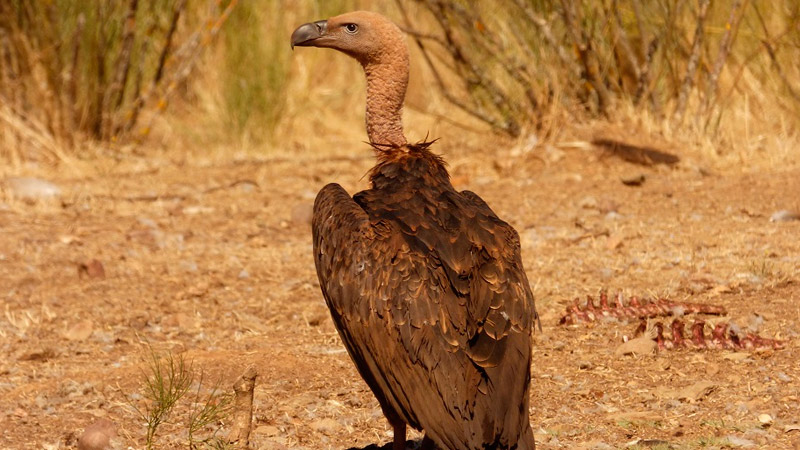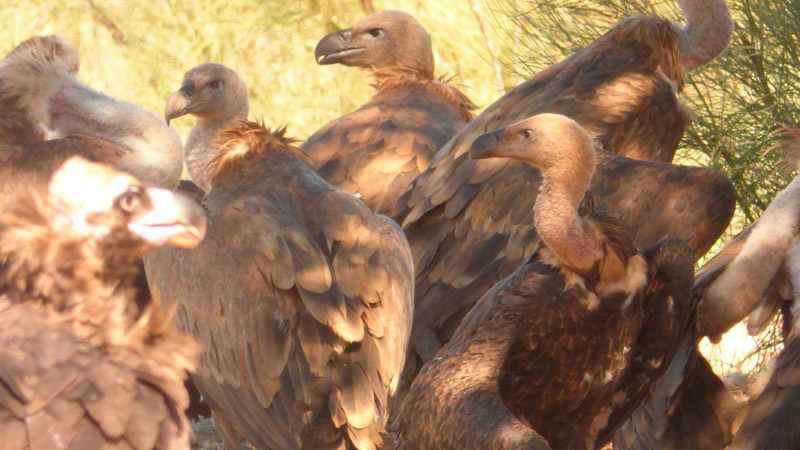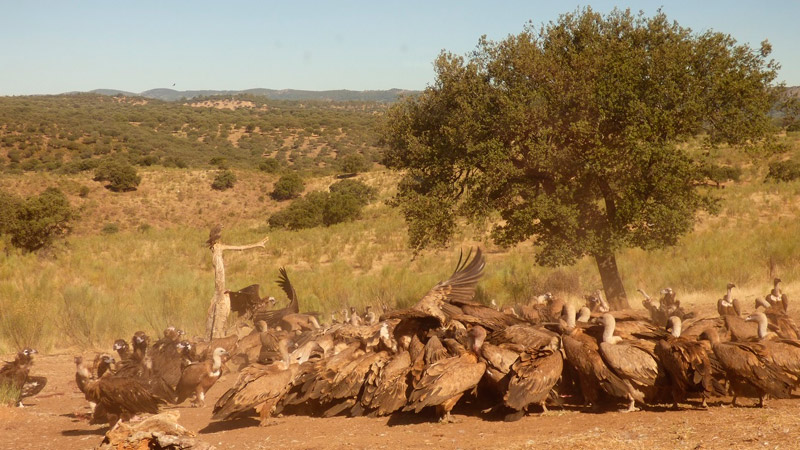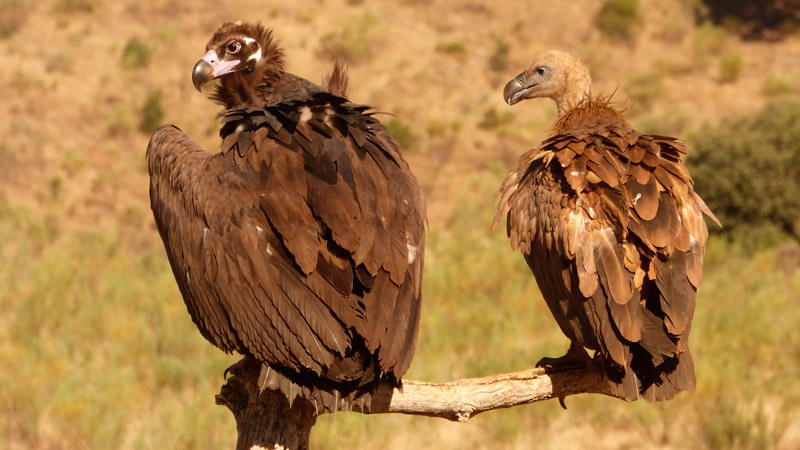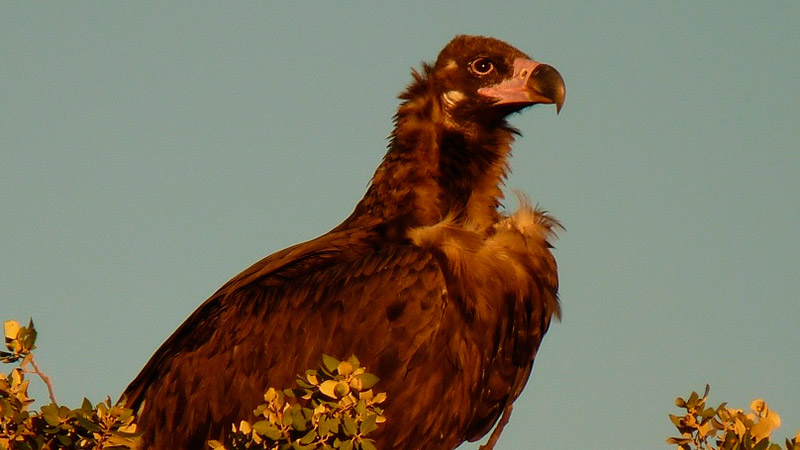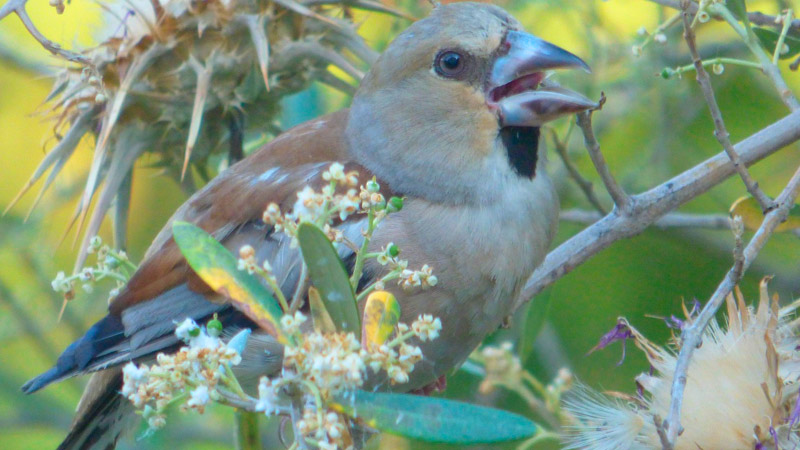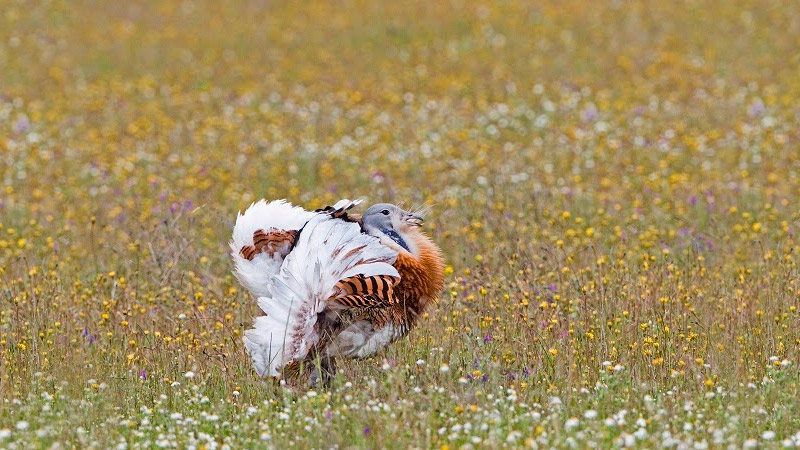It has taken me eleven years to finally get to spend a morning in a photographic hide to watch vultures
come to carrion. It had been on my bucket list ever since this type of service started to be offered in Extremadura.
So it was great anticipation that I booked in for my son and me at the La Cañada Hide just south of the Monfragüe
National Park. Jesús met us at the rendez-vous spot just after seven in the morning and a few minutes later he
welcomed us into the hide. From the information I had read previously I had already dispelled any notion of
sitting on a stool in a cramped canvas structure, with the camera lens poking out of a slit in the fabric.
This was a bricks-and-mortar construction, with plenty of space. Curtains divided the hide into two: at the
back the entrance, with a table with bird notes and a cubicle with a chemical flush toilet. Beyond the curtains,
a long window covered almost the entire width of the building, using spy-glass so that birds outside could not
see us inside. There we could sit on comfortable armchairs, with our cold-box with drinks and snacks between us.
In the distance we could see the cliffs of Monfragüe, home to Griffon Vulture colonies, infront of that lay a wide
expanse of dehesa whilst closer still was retama broom scrub with a few scattered small holm oaks. Immediately in
front of us, like an arena, was a patch of beaten earth with scraggly grasses and some tree stumps. It was on this
stage that the props had been scattered: abbatoir-leftovers of livestock and even a
few hens' eggs in case an Egyptian Vulture took a fancy.
The sun had not yet started to illuminate the set when the first act started. Within minutes of us taking our seats,
a flurry of Azure-winged Magpies dropped in from the wings to start taking tiny fragments of meat. More surprising
was the arrival of Crested Larks, which, barely visible against the dry earth in the half light of dawn, also approached
the sections of vertebrae to peck at morsels. As they did so a Black Kite circled over and settled on top of the tree
to our left. It was a pioneer but remained lonesome until we had been there for about half an hour, when at ten minutes
to eight other Black Kites started to pour in, all settling in the trees, some making low passes over the bait, but none
settling to feed. It was ten minutes after that when Patrick exclaimed "My God" as a Black Vulture flew to land on the
top of the nearest tree to us. It was an exciting moment: neither of us had ever been that close to the Old World's
largest bird of prey. Like the kites, it too remained perched, leaving the carrion for the time being to the Azure-winged Magpies.
Over the next few minutes, a Griffon Vulture arrived to perch nearby, whilst an Egyptian Vulture appeared on a further tree.
We had been there an hour when the first Black Kite made a tentative landing and slowly, almost nervously approached the food. Others looked on from the trees. A Griffon Vulture, instantly dwarfing the kite also landed at the edge of the arena, but simply watched. But then the waiting was rewarded, as if by some coded signal, there was a surprise and seemingly sponanteous onslaught by a dozen Black Kites, piling onto a piece of carrion. The Azure-winged Magpies fled and were not seen again. Once the kites were positioned there, like some vanguard action, the vultures which had gardually been arriving in direct flight from Monfragüe and gathering on nearby treetops, started to descend. They assembled though at the periphery, in clusters, watching as the kites continued to push and shove around the bones. The drama unfolded and at times reached almost comic climaxes. As individuial vultures approached the food, they performed a cheorography. Black Vultures lowered their necks and hunched their broad shoulders, half-spreading their wings like a villain's cloak and then taking huge slow-motion goose-steps as a threatening pose to ward off the kites. With more urgency, the long strides were switched to hops, with this massive bird literally bouncing kangaroo-like to gain pace. This menace was directed not just at the diminutive kites, but also to the other vultures, including congeners. Antagonism between the Griffon Vultures was also manifest by a bird standing on one-leg, with spread-eagled wings, raising the other leg slowly with its foot spreading open "palm" facing outwards to its opponent...



